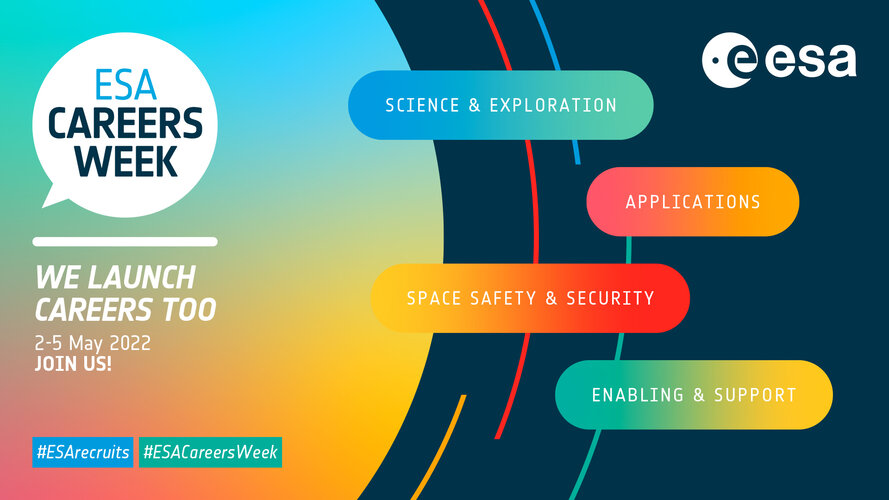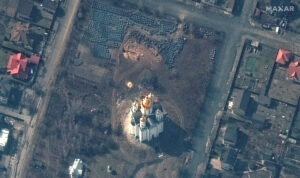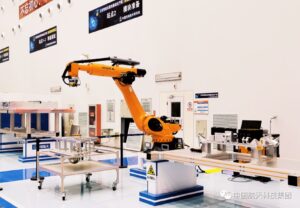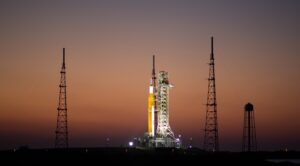Webb's mid-infrared instrument cooldown continues
Thursday, 07 April 2022 06:57 "The Mid-Infrared Instrument (MIRI) and other Webb instruments have been cooling by radiating their thermal energy into the dark of space for the bulk of the last three months. The near-infrared instruments will operate at about 34 to 39 kelvins, cooling passively. But MIRI's detectors will need to get a lot colder still, to be able to detect longer wavelength photons. This is where the MIRI cry
"The Mid-Infrared Instrument (MIRI) and other Webb instruments have been cooling by radiating their thermal energy into the dark of space for the bulk of the last three months. The near-infrared instruments will operate at about 34 to 39 kelvins, cooling passively. But MIRI's detectors will need to get a lot colder still, to be able to detect longer wavelength photons. This is where the MIRI cry SOFIA maps the first magnetic fields of a galactic bone in their entirety
Thursday, 07 April 2022 06:57 The Stratospheric Observatory for Infrared Astronomy (SOFIA) -a joint project of NASA and the German Space Agency at DLR-mapped the very first and most detailed map of the long filaments that outline the densest part of a galaxy's arms (galactic bones). It is the most detailed map of the magnetic fields of G47-a giant filamentary bone in the Milky Way. The results were published in The Astrophys
The Stratospheric Observatory for Infrared Astronomy (SOFIA) -a joint project of NASA and the German Space Agency at DLR-mapped the very first and most detailed map of the long filaments that outline the densest part of a galaxy's arms (galactic bones). It is the most detailed map of the magnetic fields of G47-a giant filamentary bone in the Milky Way. The results were published in The Astrophys The Milky Way's inner ring
Thursday, 07 April 2022 06:57 Using a combination of observed stars and a realistic model of the Milky Way, scientists at the Max Planck Institute for Extraterrestrial Physics have found a new structure in our home galaxy. Just outside the Galactic bar, they found an inner ring of metal rich stars, which are younger than the stars in the bar. The ages of the ring stars can be used to estimate that the bar must have formed
Using a combination of observed stars and a realistic model of the Milky Way, scientists at the Max Planck Institute for Extraterrestrial Physics have found a new structure in our home galaxy. Just outside the Galactic bar, they found an inner ring of metal rich stars, which are younger than the stars in the bar. The ages of the ring stars can be used to estimate that the bar must have formed Satcom Direct plane simple antenna system takes off
Thursday, 07 April 2022 06:57 Satcom Direct, the business aviation solutions provider, is celebrating Federal Aviation Association, (FAA) approval of Supplemental Type Certificates, (STCs) for the Satcom Direct Plane Simple Ku-band tail-mounted Antenna System. Following a multi-model, (AML) STC approval, Gulfstream G550, G450, GV and GIV types can now be equipped with the advanced technology terminal.
The Satcom Direct
Satcom Direct, the business aviation solutions provider, is celebrating Federal Aviation Association, (FAA) approval of Supplemental Type Certificates, (STCs) for the Satcom Direct Plane Simple Ku-band tail-mounted Antenna System. Following a multi-model, (AML) STC approval, Gulfstream G550, G450, GV and GIV types can now be equipped with the advanced technology terminal.
The Satcom Direct SpaceX delivers Blue Canyon built GNOMES-3 microsat to orbit for PlanetiQ
Thursday, 07 April 2022 06:57 Small satellite manufacturer and mission services provider Blue Canyon Technologies LLC ("BCT" or "Blue Canyon"), a wholly-owned subsidiary of Raytheon Technologies, hsa announced the successful launch of GNOMES-3, aboard the SpaceX Falcon 9 Transporter-4 mission on April 1.
GNOMES-3 is an ESPA-class microsat spacecraft bus, which Blue Canyon manufactured for PlanetiQ. BCT provided the mic
Small satellite manufacturer and mission services provider Blue Canyon Technologies LLC ("BCT" or "Blue Canyon"), a wholly-owned subsidiary of Raytheon Technologies, hsa announced the successful launch of GNOMES-3, aboard the SpaceX Falcon 9 Transporter-4 mission on April 1.
GNOMES-3 is an ESPA-class microsat spacecraft bus, which Blue Canyon manufactured for PlanetiQ. BCT provided the mic SpaceX delivers several NanoAvionics satellites to orbit
Thursday, 07 April 2022 06:57 Friday's SpaceX Transporter-4 mission included three satellites built by smallsat mission integrator NanoAvionics for multiple customers.
MP42 is NanoAvionics' largest satellite built and launched so far, based on one of the first commercially available modular microsatellite buses in the industry. MP42 is a rideshare mission, and part of the company's ongoing program. It's hosting multipl
Friday's SpaceX Transporter-4 mission included three satellites built by smallsat mission integrator NanoAvionics for multiple customers.
MP42 is NanoAvionics' largest satellite built and launched so far, based on one of the first commercially available modular microsatellite buses in the industry. MP42 is a rideshare mission, and part of the company's ongoing program. It's hosting multipl Introducing ESA Careers Week: 2-5 May 2022
Thursday, 07 April 2022 06:10
Want to find out about applying for a job at ESA? Want to hear about the projects our teams are working on? Interested in joining our online job fair? You can do all this and more at ESA Careers Week from 2 - 5 May — save the date!
Space Force to shore up cybersecurity as threats proliferate
Wednesday, 06 April 2022 20:59
The most likely form of attack facing satellite networks does not happen in space but on the ground, where hackers seek to exploit vulnerabilities.
The post Space Force to shore up cybersecurity as threats proliferate appeared first on SpaceNews.
As Russia prepared to invade, U.S. government and satellite imagery suppliers teamed up to help Ukraine
Wednesday, 06 April 2022 19:27
Leading up to Russia's invasion of Ukraine, U.S. intelligence agencies more than doubled its procurement of commercial electro-optical imagery
The post As Russia prepared to invade, U.S. government and satellite imagery suppliers teamed up to help Ukraine appeared first on SpaceNews.
As Russia prepared to invade, U.S. opened commercial imagery pipeline to Ukraine
Wednesday, 06 April 2022 19:27
Leading up to Russia's invasion of Ukraine, U.S. intelligence agencies more than doubled its procurement of commercial electro-optical imagery
The post As Russia prepared to invade, U.S. opened commercial imagery pipeline to Ukraine appeared first on SpaceNews.
War in Ukraine underscores need for missile defense upgrade
Wednesday, 06 April 2022 18:58
The war in Ukraine is demonstrating the rapid pace of change in modern warfare and underscoring the need for the enhanced missile defense capabilities, said Derek Tournear, director of the Pentagon's Space Development Agency.
The post War in Ukraine underscores need for missile defense upgrade appeared first on SpaceNews.
NASA to hold off retest of Artemis, clearing way for Axiom Space civilian launch
Wednesday, 06 April 2022 15:49
NASA will stand down for now in its attempt to complete a launch pad test of the massive Artemis moon rocket at Kennedy Space Center, which paves the way for the first all-civilian launch to the International Space Station on Friday.
After scrubs in the tanking and countdown simulation on both Sunday and Monday at KSC's Launch Pad 39-B, further attempts this week would have threatened the Axiom Space launch on a SpaceX Crew Dragon from nearby Launch Pad 39-A.
But NASA officials said a quick turnaround wasn't in the cards to work out the issues from the incomplete test.
"It looks like we'll take just about as much time as we're going to need for Axiom to fly, so we will fall in behind them," said Artemis mission manager Mike Sarafin. "We've got to finish sharpening the pencil on our open work but we don't anticipate it will be too much longer than after the Axiom launch."
The fully integrated Space Launch System rocket and Orion capsule faced different pressurization and valve issues both tied to the mobile launcher on which the rocket sits that halted tanking efforts both days.
Consequences for nefarious activity in space
Wednesday, 06 April 2022 13:27
What if countries don't follow norms of behavior for space operations?
The post Consequences for nefarious activity in space appeared first on SpaceNews.
New Chinese small sat manufacturing capacity could have international ramifications
Wednesday, 06 April 2022 10:44
Two new Chinese factories capable of producing hundreds of small satellites per year could help China achieve space objectives and impact the international market.
The post New Chinese small sat manufacturing capacity could have international ramifications appeared first on SpaceNews.
SLS countdown test on hold after second scrub
Wednesday, 06 April 2022 10:05
After a series of problems scrubbed a second countdown rehearsal for the Space Launch System April 4, NASA will wait until after the launch of a SpaceX mission to the space station before trying again.

